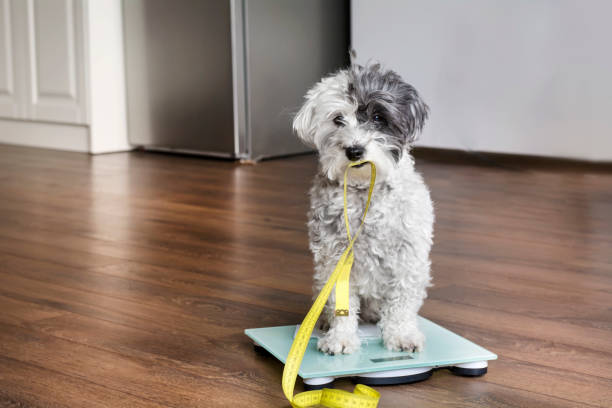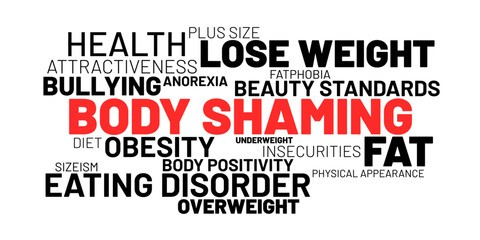Keeping your dog at a healthy weight is one of the most important things you can do to ensure a long, happy life for your furry friend. But with so many breeds, sizes, and life stages, figuring out your dog’s ideal weight can feel overwhelming.
This comprehensive guide breaks it all down, giving you the tools to track and maintain your dog’s optimal weight, based on their breed, age.
Understanding the Importance of Healthy Weight in Dogs

Why Weight Matters: Just like in humans, weight plays a vital role in a dog’s overall health. Overweight dogs are at greater risk for issues like joint problems, heart disease, diabetes, and a shortened lifespan. On the other hand, underweight dogs may suffer from malnutrition, low energy, or underlying health problems.
What Is a Healthy Weight? A healthy weight varies between individual dogs. Factors such as breed, age, sex, activity level, and genetics all play a role. That’s why it’s essential to understand your dog’s unique requirements, rather than relying on generalizations.
How to Tell If Your Dog Is at a Healthy Weight

Body Condition Score (BCS): Veterinarians often use a Body Condition Score to evaluate a dog’s physique, which ranges from 1 (emaciated) to 9 (obese). A score of 4 or 5 is typically considered ideal:
- You should be able to feel, but not see, your dog’s ribs.
- They should have a visible waist when viewed from above.
- Their belly should tuck up when viewed from the side.
Other Visual Cues: Look for signs of excessive fat deposits around the neck, back, or base of the tail. Lethargy and labored breathing during mild activity can also be red flags for overweight issues.
Ideal Dog Weight Chart by Breed Size
Use the charts below as a general reference for common breed weight ranges. Always consult your vet for personalized recommendations.
Small Breeds (Chihuahua, Pomeranian, Dachshund, etc.)
| Age | Ideal Weight (lbs) |
|---|---|
| 3 months | 2 – 4 |
| 6 months | 4 – 8 |
| 1 year | 5 – 12 |
| Adult | 6 – 15 |
Medium Breeds (Beagle, Cocker Spaniel, Border Collie, etc.)
| Age | Ideal Weight (lbs) |
| 3 months | 8 – 15 |
| 6 months | 15 – 30 |
| 1 year | 25 – 40 |
| Adult | 30 – 50 |
Large Breeds (Labrador, Golden Retriever, German Shepherd, etc.)
| Age | Ideal Weight (lbs) |
| 3 months | 15 – 30 |
| 6 months | 30 – 50 |
| 1 year | 50 – 80 |
| Adult | 60 – 100 |
Giant Breeds (Great Dane, Saint Bernard, Mastiff, etc.)
| Age | Ideal Weight (lbs) |
| 3 months | 30 – 45 |
| 6 months | 60 – 90 |
| 1 year | 100 – 140 |
| Adult | 110 – 200 |
Tip: Mixed-breed dogs can fall between these categories, so focus more on body condition and frame size than breed labels alone.
Factors That Affect a Dog’s Ideal Weight

1. Breed
Every breed has a different natural size and structure. A healthy Chihuahua will weigh far less than a Labrador Retriever, and that’s perfectly normal. Breed standards give a general range, but there can still be healthy outliers.
2. Age
- Puppies are constantly growing and changing. Their ideal weight shifts quickly as they mature.
- Adult dogs should maintain a steady weight for most of their lives.
- Senior dogs may slow down and gain weight more easily or lose weight due to age-related health problems.
3. Activity Level
Working breeds and highly active dogs may carry more lean muscle mass, which affects their weight without indicating poor health.
4. Neutering/Spaying
Hormonal changes can affect metabolism, so it’s not uncommon for spayed or neutered dogs to gain weight more easily if their diet and activity levels don’t adjust accordingly.
Puppy vs Adult vs Senior: Weight Considerations by Age

Puppies: Puppies gain weight rapidly. Regular weigh-ins (weekly or bi-weekly) are crucial during growth spurts to ensure they’re on a healthy track.
Adult Dogs: Once dogs reach full maturity (typically between 12–24 months depending on breed), they should stabilize at a consistent weight. Monitor monthly for changes.
Seniors: Older dogs may gain weight due to reduced activity or lose it due to underlying health conditions. Biannual vet check-ups and regular at-home monitoring are vital.
How to Monitor and Manage Your Dog’s Weight at Home

Weighing at Home: Small to medium dogs can be weighed by holding them while standing on a bathroom scale, then subtracting your own weight. For large dogs, try using a luggage or pet scale.
Tip: Step-by-Step: How to Weigh Your Dog at Home.
Track with a Journal or App: Logging your dog’s weight every month helps you catch early signs of weight gain or loss. Include notes about changes in diet, exercise, or health.
Diet and Nutrition: Feed age-appropriate, high-quality dog food. Avoid overfeeding, and use treats in moderation. Stick to measured and scheduled portions, and consult with your vet about the right calorie intake.
Tip: If you are busy dog owner, check out : 5 Best Automatic Dog Feeders – so your pet can maintain a consistent eating routine.
Exercise: Ensure your dog gets regular activity. Walks, play sessions, and mental stimulation can all contribute to maintaining a healthy weight.
Signs Your Dog May Be Overweight or Underweight

Overweight Signs:
- No visible waistline
- Difficulty feeling ribs
- Easily tired after exercise
- Heavy breathing during light activity
Underweight Signs:
- Prominent ribs, spine, or hip bones
- Lack of energy
- Dull coat or skin issues
Noticing recent changes in your dog’s weight? If your pup has packed on pounds unexpectedly, it could be more than just extra treats. Read our guide on sudden dog weight gain to uncover common causes and get fast, vet-approved solutions.
A Healthy Weight Means a Longer, Happier Life

A dog at a healthy weight isn’t just more energetic — they’re more likely to live a longer life with fewer medical issues. Monitoring your dog’s weight should be as routine as feeding or walking.
If you’re unsure about where your dog stands or need extra help, don’t hesitate to ask your vet for a weight assessment or nutritional guidance.
And if you’re feeling overwhelmed, online dog training programs like Doggy Dan’s Online Dog Trainer, led by a professional with over a decade of experience, can help you build better routines — including meal planning, exercise, and behavior support — right from the comfort of your home.



